Buan Guam-ri Dolmens (부안 구암리 지석묘군)
7213 2024-04-07
Seoksang-ri, Buan-gun, Jeonbuk-do
+82-63-580-4711
Buan Guam-ri Dolmens, designated as Historical Site No. 103, is comprised of southern-style dolmens. Dolmen refers to a particular structure of a tomb created during the Bronze Age. Dolmen is largely classified into two groups – Southern-type that has small footstones supporting large top stone; and Northern-type which is shaped like a desk. In Guam-ri, there were originally 13 dolmens, but only 10 remain. Most of the dolmens have 8 small footstones propping up one large top stone, compared to the dolmens in other regions which normally have 4 footstones.
O Sung Hanok Village (오성한옥마을)
0 2024-04-07
Daeheung-ri, Wangju-gun, Jeonbuk-do
+82-63-290-2727
Nestled between Jongnamsan Mountain and Wibongsan Mountain, O Sung Hanok Village has hanok mansion and approximately 20 hanok buildings consisting of cafes, galleries and more. The village also has various experience programs including forest walking trail that provides tradtional and cultural insights. The attraction is also known to visitors for its peaceful setting, bringing in visitors wanting to relax and meditate. Many artists who resides in the village offers gallery views, cafe, bookstore and more. In 2019, BTS stayed in the village for one week to shoot "BTS 2019 SUMMER PACKAGE" music videos and magazine photos. The village consistantly attracts ARMY and regular visitors.
Bandi Land (무주 반디랜드)
25024 2024-04-07
1324, Museol-ro, Muju-gun, Jeonbuk-do
+82-63-324-1155
Geared mainly towards children, Bandi Land is an excellent place to learn about and experience fireflies and other insects. It is comprised of Insect Museum, Firefly Research Center, Youth Campground, Log Cabin, and Firefly Habitat.
Located inside of Bandi Land, Muju Bandibyeol Astronomical Science Museum teaches various stories about space, including the birth & history of space, the solar system, constellations, and space circumstances. The Environment Theme Park also has exhibitions related to fireflies, an indicator insect proving Muju is a clean area, and other local insects, perfect for educational trips.
Banghwadong Recreational Forest (방화동 자연휴양림,가족휴가촌)
6039 2024-04-07
778, Banghwadong-ro, Jangsu-gun, Jeonbuk-do
+82-63-350-2474
Banghwadong Recreational Forest is located at the foot of Jangansan Mountain. The mountain trail from Deoksanyongso Pond leading to Banghwadonggyegok Valley features nature learning centers and adventure games facilities. The clean valley is lined with oddly shaped cliffs, shrubs and trees, which all combine into a splendid view. The forest is situated at a highland more than 500 meters above sea level. It is surrounded by mountains that are over a thousand meters above sea level, so the temperature is low and the water at the valley is cool even in the summer.
There are log cabins, group accommodation facilities, and training halls by the valley to accommodate group visits, conferences, gatherings and seminars. The recreational forest also operates Banghwadong Family Vacation Village for family visitors, equipped with accommodation facilities, various camping sites, and a wood carving experience center.
Nongae Shrine (Uiamsa Shrine) (논개사당(의암사))
13024 2024-04-07
393, Hannuri-ro, Jangsu-gun, Jeonbuk-do
+82-63-350-2326
Uiamsa Shrine was built to the memory of Chu Nongae, who sacrificed her life during the Imjin War (Japanese Invasion of Korea). In 1846, the Nongae-saeng-jang-hyang-su-myeong-bi monument was put up in praise of Nongae’s patriotism. In 1955, a shrine was built and named Uiamsa, which was then moved to the current location in 1974. Within the precincts of the shrine are a memorial stone, the portrait of Nongae by artist Kim Eun-ho, and three gates Woesammun, Naesammun and Chunguimun erected one after another. At the memorial hall, the existing possessions of Nongae and her husband General Choi Gyeong-hoe are on display. The annual Nongae Festival takes places on September 3rd by the lunar calendar, during which memorial services and cultural events are held to commemorate Nongae.
Wansanchilbong Peak (Wansan Park) (완산칠봉(완산공원))
28424 2024-04-07
19-4, Gongsunae 1-gil, Wansan-gu, Jeonju-si, Jeonbuk-do
+82-63-220-5438
Wansanchilbong Peak, also referred to as Wansan Park, is located on the southern outskirts of downtown Jeonju. The mountain is known to be the origin of Iksan and Gunsan's birthplace and the mountain's fame had spread across the southern region along with Jeonju. In addition to the historically significant Chilseongsa Temple, there is a pavilion located at the top where people can look out over the surrounding area. The mountain is also a place where a fierce battle took place from the Donghak Peasant Revolution. Today, the mountain is made into a park and serves as a popular retreat for locals.
Birthplace of Nongae (논개생가)
15425 2024-04-07
558, Uiam-ro, Jangsu-gun, Jeonbuk-do
+82-63-350-1636
Nongae was born in Juchon Village in the 7th year of King Seonjo (September 3, 1575). A clever and beautiful young lady, Nongae voluntarily registered as a gisaeng (female entertainer) at the age of 19 when the nation was at risk of invasion during the Imjin War. While entertaining one evening, she led Japanese general Keyamura Rokusuke to the edge of a cliff and flung her arms around him, casting both herself and the general to their deaths in the Jinju Namgang River.
To commemorate her faithfulness and allegiance to her country, a project to restore her place of birth was completed in September 2000, drawing many visitors. Nearby Nongae’s birthplace are many tourist attractions, including Deogyusan Mountain and Odongje Pass and a hiking trail that connects Jangansan County Park, Jijigyegok Valley, and Donghwa Dam.
Rajetongmun Gate (라제통문)
25126 2024-04-07
Rajetongmun-ro, Muju-gun, Jeonbuk-do
+82-63-322-2905
The historical border of the Silla and Baekje Kingdoms, Rajetongmun Gate of Seolcheon-myeon, Muju was formed from a rock cave in Seokgyeonsan Mountain. The tunnel is approximately 3 meters in x_height and 10 meters in length, and divides the villages of Sindu Maeul into Dugil-ri, Seolcheon-myeon and Inam Maeul in Socheon-ri. During the Three Kingdoms Period, the rocky ridges of Seokgyeonsan Mountain drew the boundary of Silla's Mupung in the east with Baekje's Seolcheo to the west.
Tracing the history from the Three Kingdoms Period to the Goryeo dynasty, the cultures and traditions of the two regions were markedly different. If curious about the difference, one could simply stop by Seolcheon on market day, where the Muju and Mupung local
dialects and customs can easily be distinguished.
People used to cross Seokgyeonsan Mountain by a footpath along the rocky ridge to travel between Seolcheon and Mupung. During the Japanese occupation, a new road was created by turning a cave into a tunnel through the mountain so cows and horse carts could freely pass from Muju to Gimcheon.
General Kim Yoo Shin from the Silla Kingdom, the hero of unification of the Three Kingdoms, often passed by the gate, later giving rise to the gate's nickname, Tongilmun (literally "Unification Gate"). The gate
is number one on the list of 33 scenic sites in Gucheon-dong.
Keumkuwon Sculpture Park (금구원야외조각미술관)
10204 2024-04-07
31, Jogakgongwon-gil, Buan-gun, Jeonbuk-do
+82-63-584-6770
Keumkuwon Sculpture Park was founded in 1966 by Kim O-seong, and was the first park of its kind in Korea. The park was registered as Private Museum No. 277 by the Ministry of Culture and Tourism in 2003. Many of the roughly 100 sculptures are realistic in style and are related to one another, creating a feeling of watching a play unfold before one's eyes. Main pieces include "Farmer’s Hands," "Thoughts about the Limited and the Unlimited," and "The Sky in the West." The sculptures are made of marble or granite and vary in size, with some measuring 450 centimeters.
Indigenous trees and bushes of the Byeonsanbando Peninsula can be found throughout the park, giving visitors a chance to enjoy both the sculptures and the backcountry charm. The park also features the Keumkuwon Astronomical Observatory, opened in 1991. Visitors can combine their trip to the park with a visit to nearby tourist sites like Gyeokpohang Harbor, Chaeseokgang Cliff, Suseongdang Shrine, and Jeokbyeokgang Cliff.
Gochang Dosoram Hermitage (도솔암(고창))
22384 2024-04-07
294, Dosol-gil, Gochang-gun, Jeonbuk-do
+82-63-564-2861
Dosoram Hermitage, along with Seonunsa Temple, is thought to have been built during the Baekje era (18 BC-AD 660). The temple is managed by Seonunsa Temple on Dosolsan Mountain in Gochang-gun, Jeollabuk-do.

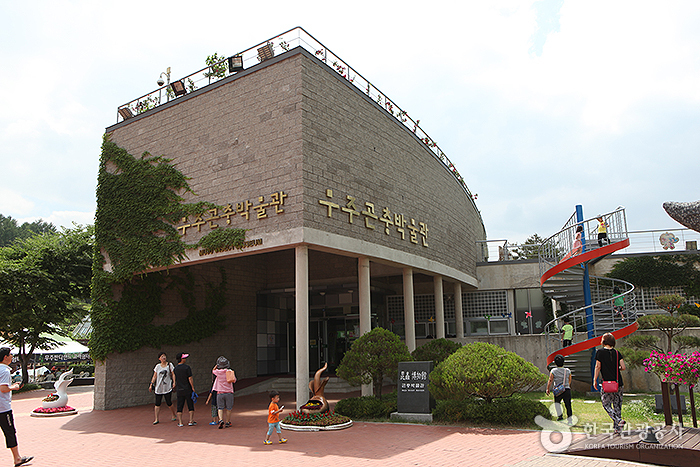
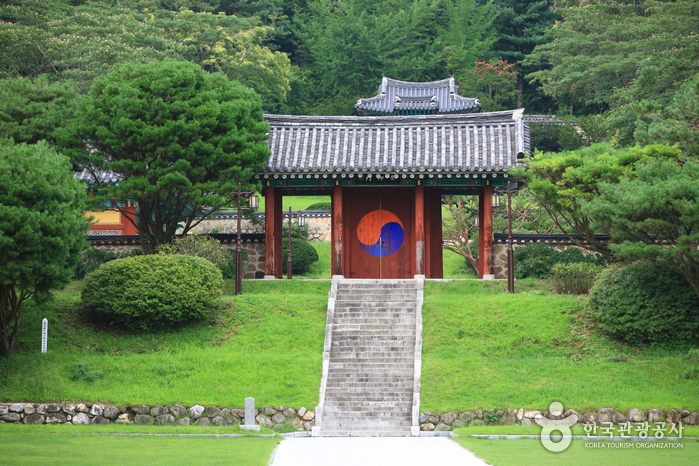
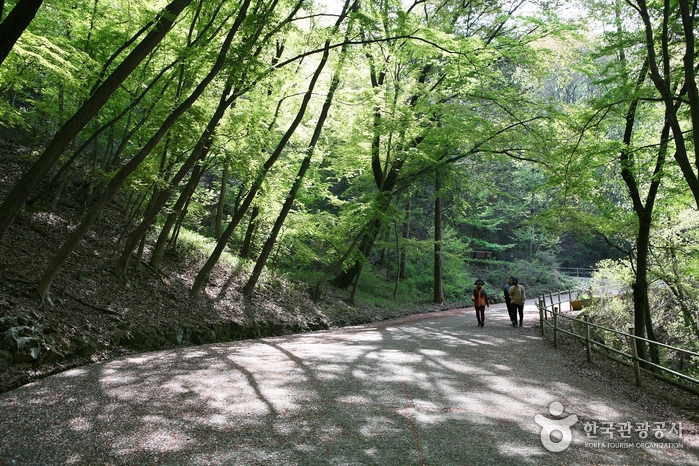
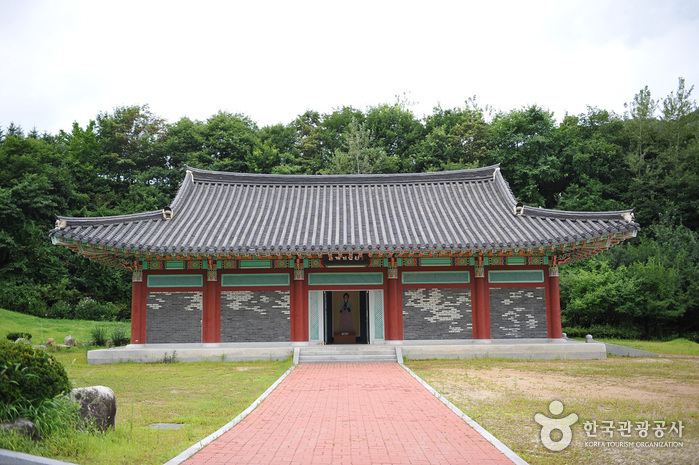
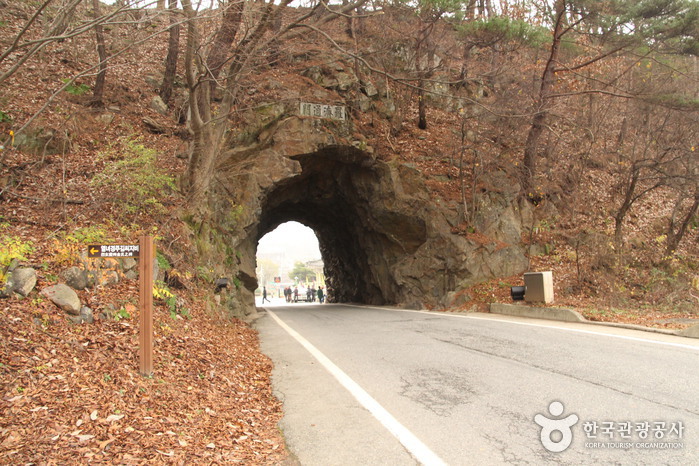
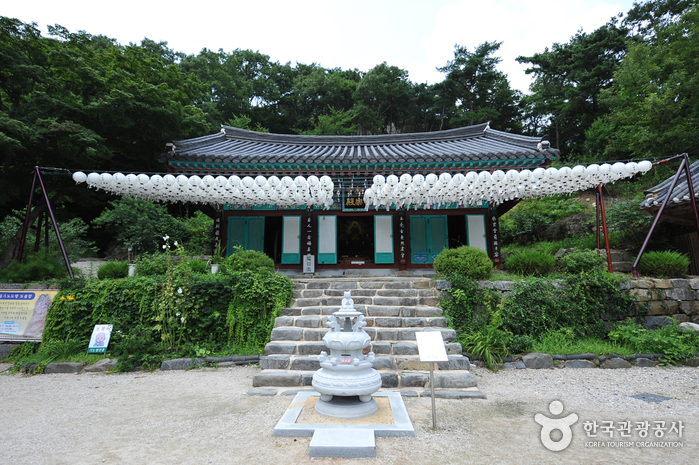
 English
English
 한국어
한국어 日本語
日本語 中文(简体)
中文(简体) Deutsch
Deutsch Français
Français Español
Español Русский
Русский